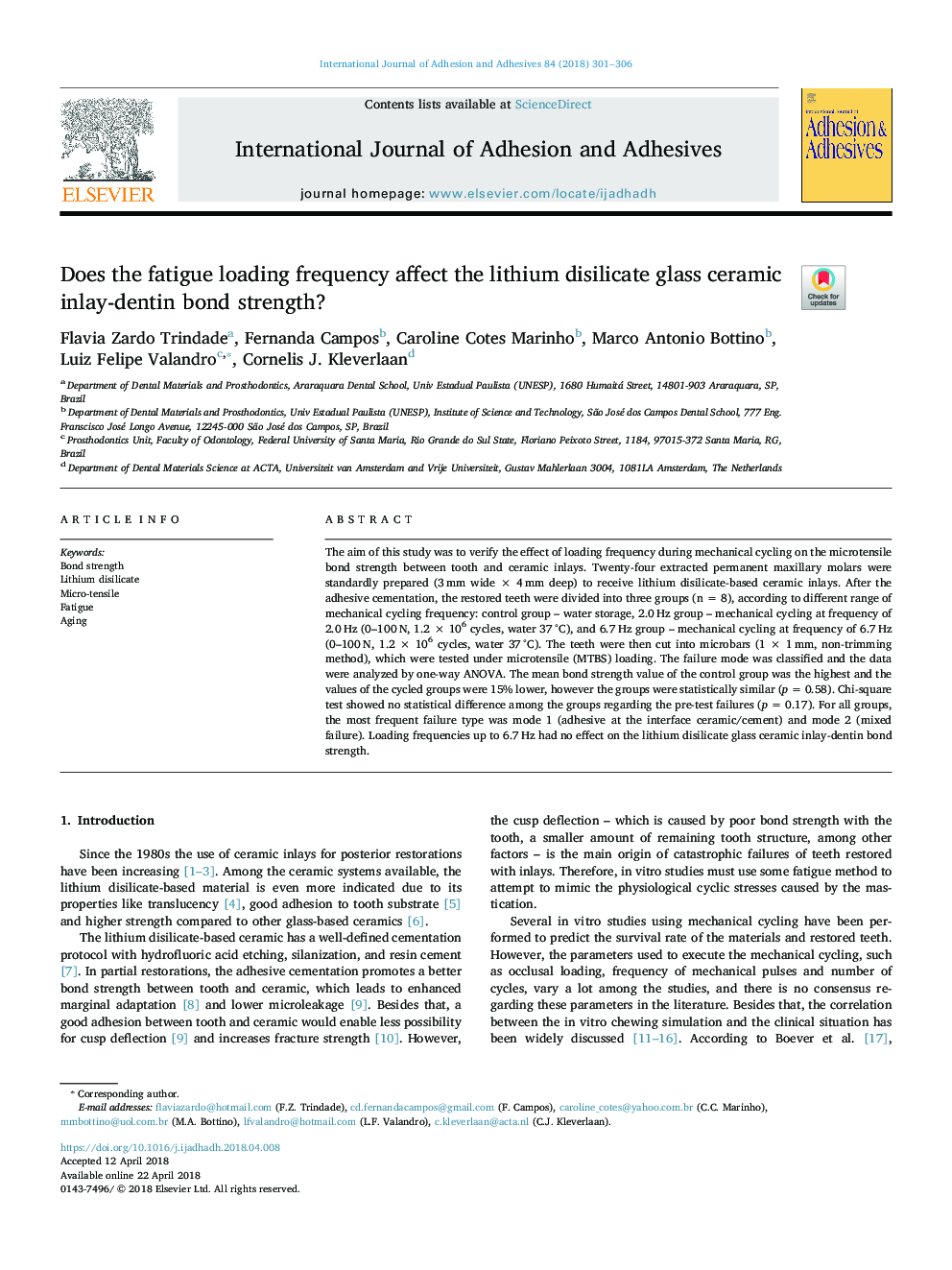| Article ID | Journal | Published Year | Pages | File Type |
|---|---|---|---|---|
| 7170913 | International Journal of Adhesion and Adhesives | 2018 | 6 Pages |
Abstract
The aim of this study was to verify the effect of loading frequency during mechanical cycling on the microtensile bond strength between tooth and ceramic inlays. Twenty-four extracted permanent maxillary molars were standardly prepared (3â¯mm wide à 4â¯mm deep) to receive lithium disilicate-based ceramic inlays. After the adhesive cementation, the restored teeth were divided into three groups (n = 8), according to different range of mechanical cycling frequency: control group - water storage, 2.0â¯Hz group - mechanical cycling at frequency of 2.0â¯Hz (0-100â¯N, 1.2 à 106 cycles, water 37â¯Â°C), and 6.7â¯Hz group - mechanical cycling at frequency of 6.7â¯Hz (0-100â¯N, 1.2 à 106 cycles, water 37â¯Â°C). The teeth were then cut into microbars (1 à 1â¯mm, non-trimming method), which were tested under microtensile (MTBS) loading. The failure mode was classified and the data were analyzed by one-way ANOVA. The mean bond strength value of the control group was the highest and the values of the cycled groups were 15% lower, however the groups were statistically similar (p = 0.58). Chi-square test showed no statistical difference among the groups regarding the pre-test failures (p = 0.17). For all groups, the most frequent failure type was mode 1 (adhesive at the interface ceramic/cement) and mode 2 (mixed failure). Loading frequencies up to 6.7â¯Hz had no effect on the lithium disilicate glass ceramic inlay-dentin bond strength.
Related Topics
Physical Sciences and Engineering
Engineering
Mechanical Engineering
Authors
Flavia Zardo Trindade, Fernanda Campos, Caroline Cotes Marinho, Marco Antonio Bottino, Luiz Felipe Valandro, Cornelis J. Kleverlaan,
